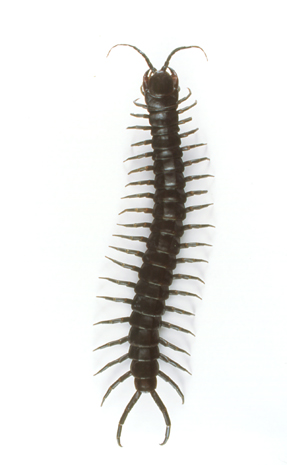Giant Centipede (Scolopendra sp.)
Pricing: Dead (spread, as pictured): $50-$300, depending on size (pricing for large Scolopendra specimens starts at 10 cm).
Geographic Range: Worldwide Tropics
View: Top View
Size: Length: 25cm+
Availability Notes: Giant specimens are very rare.
The genus Scolopendra contains the largest and most dangerous of the centipedes. Only small species are present in the colder parts of their range but in the tropics, where they can be quite common, many Scolopendra species reach lengths of well over a foot. They generally feed on insects but larger species, like the one pictured here, are capable of feeding on all manner of animals - including small rodents. Although the specimen in the image looks like an average centipede, it is over 20 cm (8") long - excluding antennae and legs. These massive creatures capture their prey using raw aggression and doses of venom released from their gnathopods. Although you won't die from the venom (usually), large species of Scolopendra can inflict incredibly painful bites. They can also bite repeatedly, all the while grasping with powerful legs that each end in a sharp talon. The last pair of legs is often the longest and may be armed with additional spikes. Most Scolopendra are nocturnal, hunting at night. Females excavate cavities in soil or rotten wood and lay a mass of eggs that they coil around and protect. Young are protected until they can fend for themselves but, since they're Scolopendra centipedes that really doesn't take very long.
